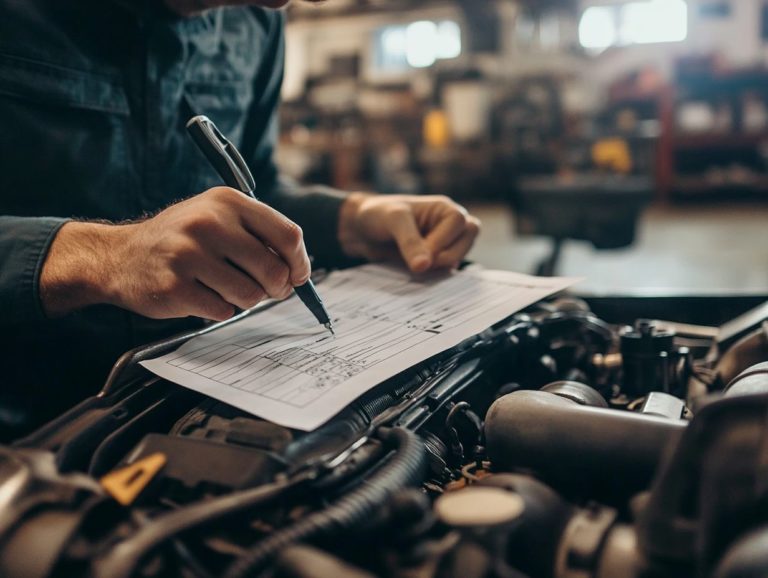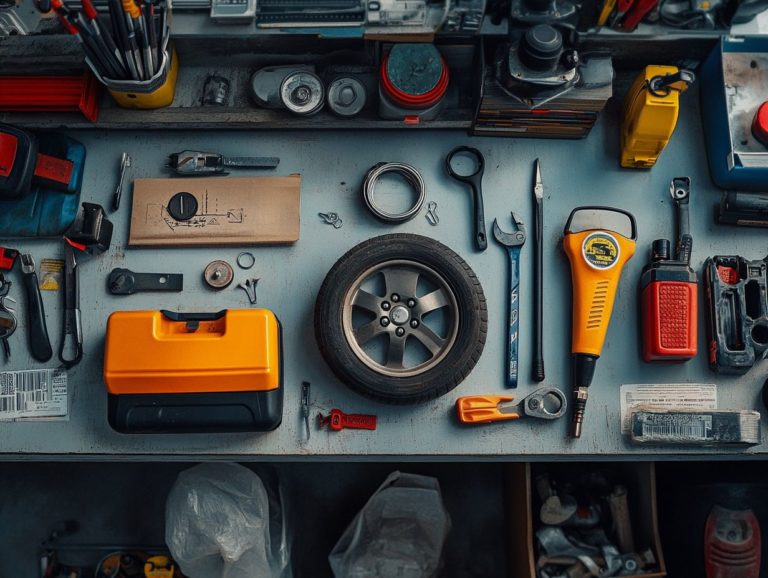What to Inspect in a Car’s Transmission System
The transmission system is often the unsung hero of your vehicle. It plays a vital role in ensuring smooth gear shifts and efficient power transfer from the engine to the wheels.
By understanding how this system operates and recognizing potential issues, you can save both time and money down the line.
You ll discover the significance of your car s transmission, common problems to watch for, and a step-by-step guide to inspecting and maintaining this crucial component.
Whether you re a seasoned car enthusiast or a casual driver, you ll find valuable tips to keep your transmission running smoothly for years to come.
Contents
- Key Takeaways:
- The Importance of a Car’s Transmission System
- Signs of Transmission Problems
- How to Inspect a Car’s Transmission System
- Common Transmission Issues and How to Fix Them
- Regular Maintenance for a Healthy Transmission
- Frequently Asked Questions
- What to Inspect in a Car s Transmission System?
- Why is it Important to Inspect the Transmission Fluid?
- What to Look for When Inspecting Transmission Fluid?
- How Often Should I Inspect the Transmission Fluid?
- What’s the Purpose of Inspecting the Transmission Filter?
- What Are the Signs of Transmission Problems?
Key Takeaways:
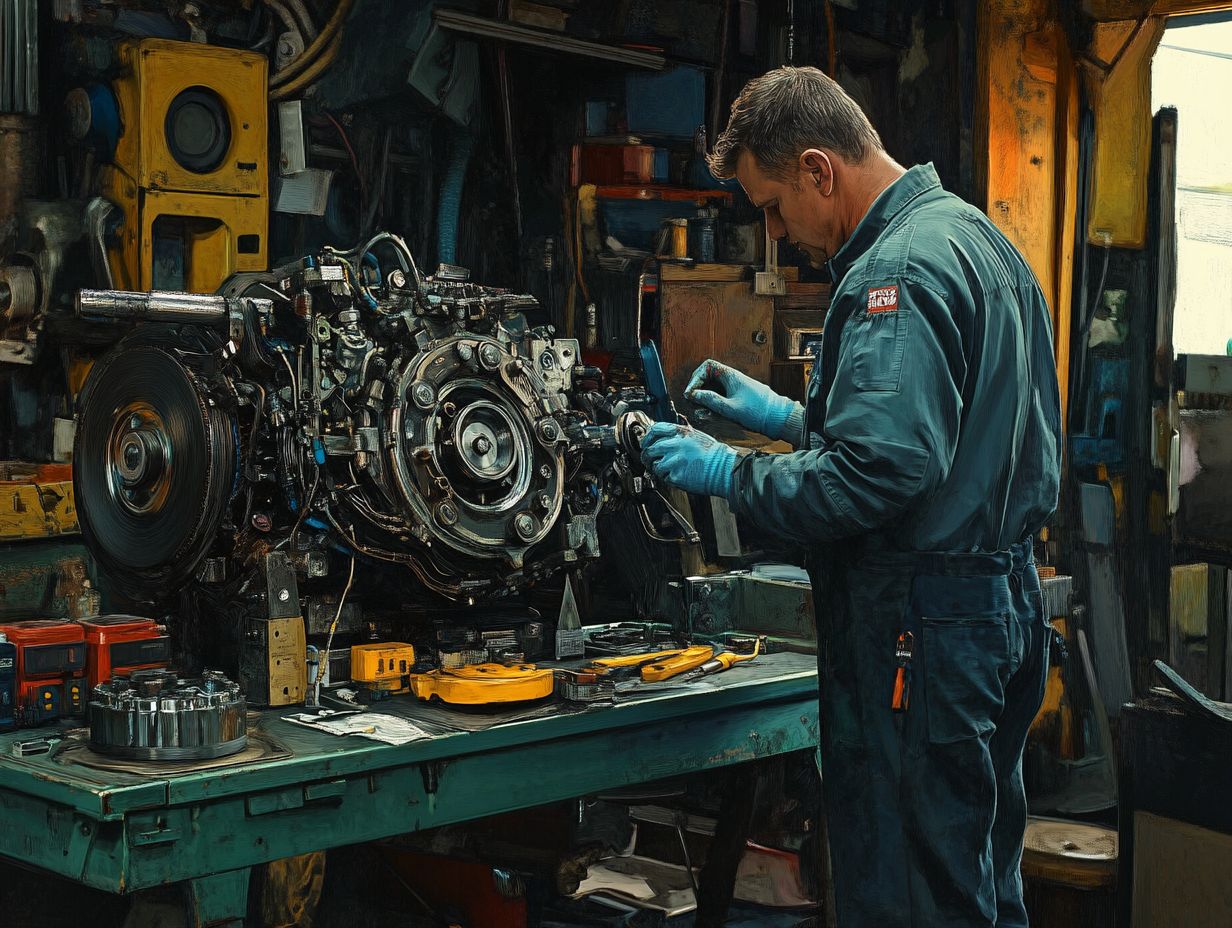
Regular maintenance is key to a healthy transmission system. Follow best practices for longevity and avoid costly repairs.
Pay attention to common warning signs of transmission problems, such as strange noises or difficulty shifting gears.
Inspecting a car’s transmission system can be done step-by-step, and understanding the role of the transmission is crucial for proper maintenance.
The Importance of a Car’s Transmission System
The transmission system is an essential part of any vehicle. It expertly facilitates the effortless transfer of power from the engine to the wheels. This functionality is crucial for both automatic and manual transmissions.
A well-maintained gearbox not only enhances your driving experience but also extends your vehicle’s lifespan. Regular inspections are particularly essential for pre-owned cars.
Indy Auto Man emphasizes the importance of being aware of a vehicle’s transmission history when contemplating a purchase. Unresolved issues can turn into complicated repairs that may lead to significant expenses in the long run.
Understanding the Role of the Transmission
The transmission acts as the crucial link between your engine and the wheels. It significantly influences how efficiently your vehicle operates. Understanding the intricacies of different transmission types, especially automatic and manual, is key to grasping your vehicle’s performance.
An automatic transmission shifts gears without any input from you, providing a smoother driving experience especially in bustling urban environments with stop-and-go traffic.
In contrast, a manual transmission requires you to engage the clutch and shift gears yourself. This gives you greater control and can enhance fuel efficiency under certain conditions.
Both types of transmission interact with components like the differential and drive shafts, which significantly affect torque delivery and responsiveness.
For enthusiasts seeking a more engaging experience, performance parts such as short-throw shifters or high-performance clutches can elevate your driving dynamics.
Signs of Transmission Problems
Identifying the signs of transmission problems early is essential for safeguarding the longevity and reliability of your vehicle. Unresolved issues can lead to extensive repairs and diminish your overall satisfaction as a driver.
Common indicators to watch for include:
- Fluid leaks
- A burning smell
- The ominous glow of the check engine light
Each of these may hint at underlying issues that warrant your immediate attention.
Common Warning Signs
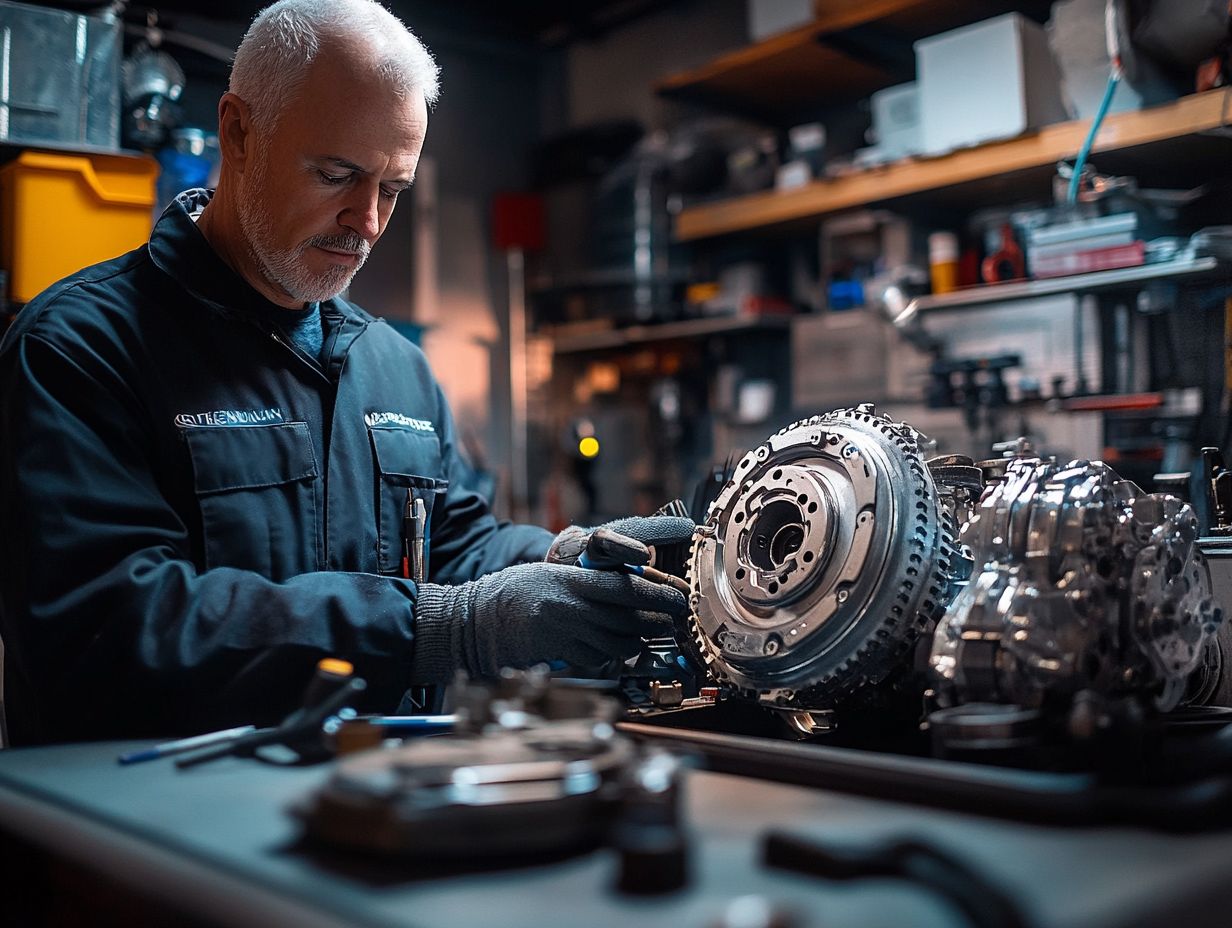
Common warning signs of transmission issues include fluid leaks, a burning smell, and unusual sounds during operation. These indicators often signify underlying problems that, if left unaddressed, could lead to costly repairs or even complete transmission failure.
For instance, fluid leaks typically point to a crack or failure in a gasket, severely impacting your transmission s performance. A burning smell could mean your transmission is overheating don t ignore it! Unusual sounds, such as grinding or whining, might indicate issues with gears or bearings, signifying the need for urgent inspection services.
Proper diagnosis and timely intervention are crucial for maintaining your transmission’s health. Ignoring these signs can lead to significant vehicle downtime and increased repair costs, so it s wise to act promptly.
Take charge of your vehicle’s health today! Schedule a transmission inspection now!
How to Inspect a Car’s Transmission System
Inspecting a car’s transmission system is a detailed task that involves checking important parts. A meticulous transmission inspection can uncover potential issues before they develop into costly repairs, especially for used cars.
Utilizing resources such as a vehicle history report from CARFAX offers invaluable insights into any previous transmission troubles, giving you the power to make informed decisions about your vehicle s reliability.
Step-by-Step Guide
Inspecting a car’s transmission is a meticulous process. Follow a step-by-step guide that includes checking fluid levels, looking for leaks, and evaluating performance parts.
This comprehensive approach not only helps you spot potential issues early but also enhances the longevity and efficiency of your vehicle s transmission system.
Start with the basics: check the transmission fluid levels. Insufficient fluid can lead to overheating and significant damage, so this step is vital.
Keep an eye out for dark or burnt-smelling fluid, which is a clear sign that it s time for a change.
Don t forget to inspect for any obvious signs of leakage beneath your vehicle. A puddle of fluid could indicate a worn seal or gasket, which, if left unattended, could lead to costly repairs.
Finally, assessing performance parts like the filter and lines ensures everything is functioning correctly, ultimately saving you from unexpected breakdowns down the road.
Common Transmission Issues and How to Fix Them
Common transmission issues can vary from minor annoyances to intricate repairs that demand professional expertise. It’s crucial for you to grasp these problems, like complications with the release bearing, which helps the clutch work properly, or the shift solenoid, which controls gear changes.
Understanding these problems helps you troubleshoot effectively and plays a vital role in ensuring customer satisfaction.
Troubleshooting and Repair Tips
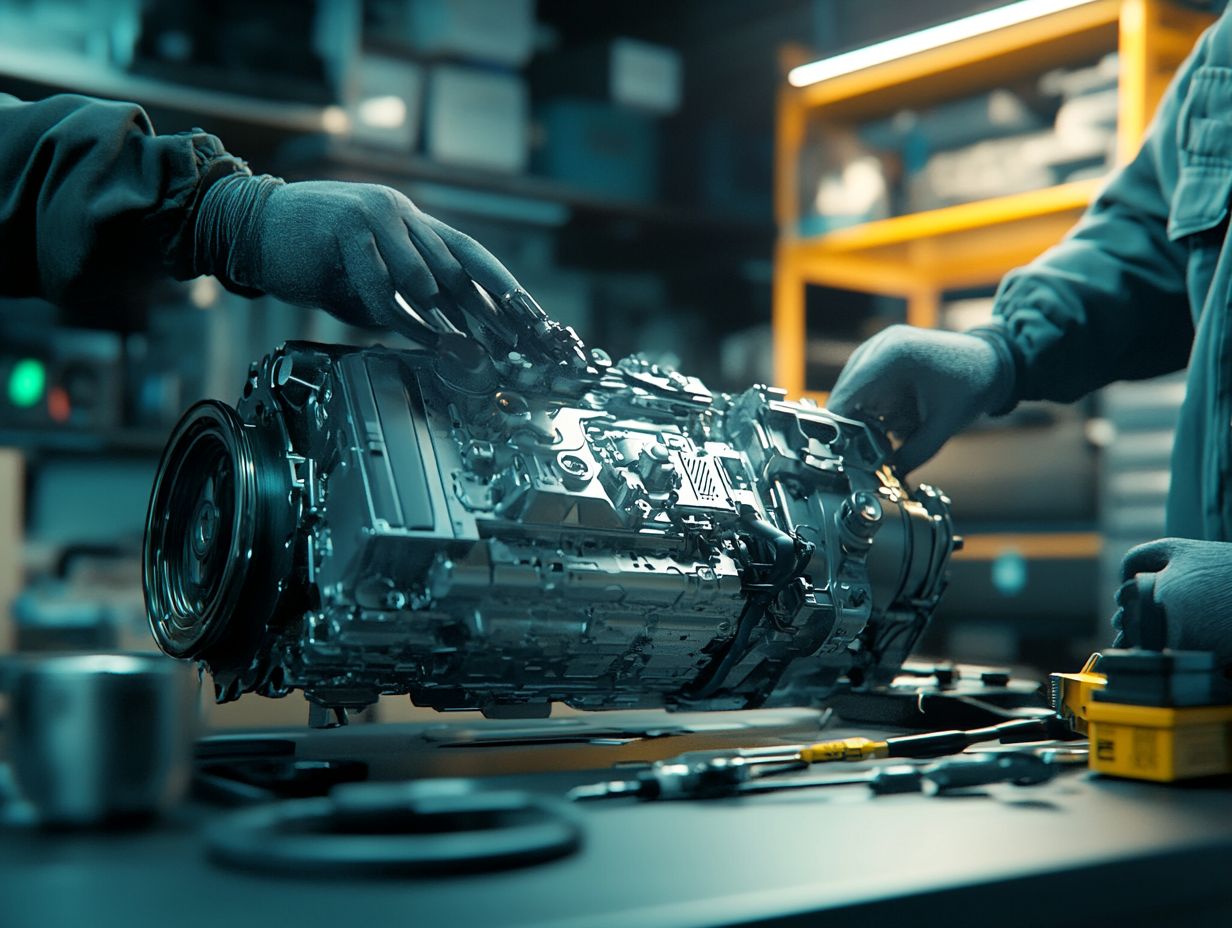
Troubleshooting transmission problems demands a systematic approach to effectively identify and rectify issues. This method helps you find and fix specific problems, ensuring that any necessary repairs are carried out promptly to prevent further damage.
By familiarizing yourself with common issues such as slipping gears, unusual noises, or fluid leaks, you can uncover the underlying causes that may impact overall performance.
A well-structured guide can be your ally, providing you with step-by-step solutions to tackle concerns swiftly, especially if you’re not well-versed in complex repairs.
Prioritizing timely service is essential for enhancing customer satisfaction, as it minimizes downtime and contributes to a smoother driving experience.
Regular Maintenance for a Healthy Transmission
Keep your transmission in top shape with regular maintenance! By committing to routine fluid changes and periodic inspections, you can effectively prevent minor issues from snowballing into major problems, thus protecting your valuable investment in your vehicle.
Best Practices for Longevity
Implementing best practices for transmission maintenance can significantly enhance both its longevity and performance. Regular transmission inspections are essential for spotting potential issues.
During these inspections, mechanics will check for leaks, component wear, and fluid levels to ensure everything operates smoothly. Timely fluid changes are equally critical for maintaining your transmission’s efficiency.
Fresh fluid not only lubricates moving parts but also aids in cooling the system, helping to prevent overheating.
By prioritizing these preventative maintenance tasks, you safeguard the health of your transmission system, ensuring optimal functionality for years to come.
Frequently Asked Questions
What to Inspect in a Car s Transmission System?
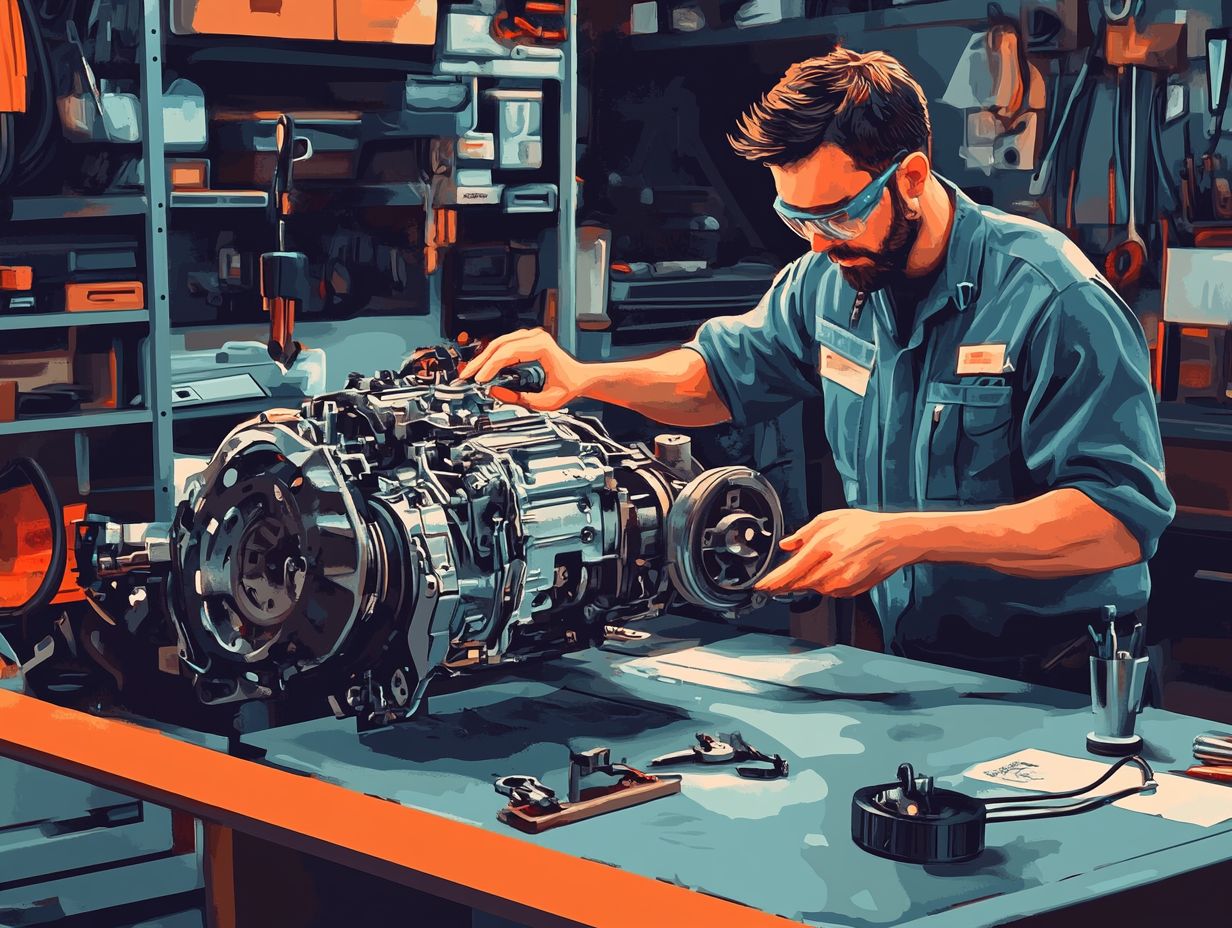
There are several key components that should be inspected in a car’s transmission system, including the transmission fluid, filter, gears, and seals.
Why is it Important to Inspect the Transmission Fluid?
The transmission fluid is vital for the transmission system’s operation. It lubricates, cools, and acts as a hydraulic fluid for moving parts.
Regular inspections can help spot issues early and prevent transmission damage.
What to Look for When Inspecting Transmission Fluid?
Check for discoloration, debris, or a burnt smell in the fluid. These signs can indicate problems that might need a fluid change.
How Often Should I Inspect the Transmission Fluid?
Inspect the transmission fluid every 30,000 miles or as per the manufacturer s guidance. If you notice any issues, get it checked right away.
What’s the Purpose of Inspecting the Transmission Filter?
The transmission filter keeps the fluid clean by trapping debris and contaminants. Regular checks and replacements help maintain performance and prevent damage.
What Are the Signs of Transmission Problems?
Look out for difficulty shifting gears, unusual noises, or leaks. If you notice these signs, get your transmission inspected immediately!




